If you’ve ever seen a driver from Quebec, you may be familiar with the motto of the province: Je me souviens – which appears on the license plate. The motto translates to “I Remember” – the underlying meaning of which is open to interpretation. Most likely it refers to the rememberance of Quebec’s unique history as a colony of New France, and its current status as the sole French-speaking Canadian province. Considering this motto, the design of Quebec city’s Gare du Palais train station (saying train station is a bit redundant, as the gare portion of the name is French for station. du Palais translates to the Palace.) is incredibly appropriate. The building is more than just a simple train station, it is a reflection of Quebec’s history, and is full of symbolism.
The Gare du Palais was completed in 1915, designed by American architect Harry Edward Prindle. Prindle was born and studied in New York, but moved to Canada in 1912 to work for the Canadian Pacific Railway, establishing himself in Montreal. The Gare du Palais was modeled stylistically after the Chateau Frontenac hotel, which was also designed by an American – Bruce Price. Frontenac itself was also built for the Canadian Pacific Railway as a destination for wealthy, luxury rail travelers. The two buildings typified the chateau style, a revival of French Renaissance architecture.
From the outside, the Gare du Palais is quite an imposing structure. The station’s high-pitched roof is made of copper, and the building is composed of granite, Deschambault limestone, and brick. The front facade features a clock eight feet in diameter, and a large metal-framed window twenty-five feet long and forty feet high. The window is divided into seven panels, each displaying the coat of arms and representing seven men important to the history of Quebec:
Charles Jacques Huault de Montmagny, 1599 – 1654. Served as a governor of New France, and negotiated a peace treaty with the Iroquois.
Marquis Alexandre de Prouville de Tracy, 1603 – 1670. Served as Lieutenant General and acting governor of France. Fought against both the Iroquois and Mohawk nations.
Louis de Buade de Frontenac, 1622 – 1698. French soldier, served as the Governor General of New France.
Jean Talon, Comte d’Orsainville, 1626 – 1694. Served as the first Intendant of New France.
Charles de la Boische, Marquis de Beauharnois, 1671 – 1749. Served as a governor and intendant of New France.
Louis-Joseph de Montcalm, 1712 – 1759. Soldier and commander of the French and Canadian forces in the French and Indian War. Killed while his troops were retreating after being defeated in the Battle of Quebec.
Major General James P. Wolfe, 1727 – 1759. Officer in the British army, defeated Montcalm’s forces in the Battle of Quebec. Although killed in this battle, he is remembered as the “Conqueror of Quebec”.
The seven coats of arms are repeated throughout the building, even as little details on the station’s chandeliers. Various other coats of arms can be found inside, including Quebec’s over the outer door, and Britain’s displayed in the form of a clock over the entranceway to the waiting area. Additional symbols can be found interspersed throughout, like the floral emblems visible on the brickwork: the Tudor rose, representing England; the thistle, representing Scotland; the shamrock, representing Ireland; the fleur de lis, representing France; and the maple leaf, of course representing Canada.
I would definitely include the Gare du Palais on my list of most beautiful train stations I’ve visited. Although significantly smaller than other stations like Grand Central or even Toronto’s Union Station, it does include various restaurants and a few little shops. The city’s bus station is also connected to the rail station, although it is a newer building not part of the original station. For a Saturday morning the station didn’t look like it got too much traffic, but of course it gets far more than the years it lay dormant between 1976 and when it was reopened in 1985.
Anyways, here are a few more photos of the station. Unfortunately there are no photos of any trains, as without a ticket they were not permitting to go into the area the trains were at.
*A historical note about this post: information regarding the history of the Gare du Palais is very lacking on the internet, at least in English. The majority of the history found in this post derives from a little piece of paper hung up by Via Rail on the wall of the station’s Panorama Room. A copy of that document can be viewed here.


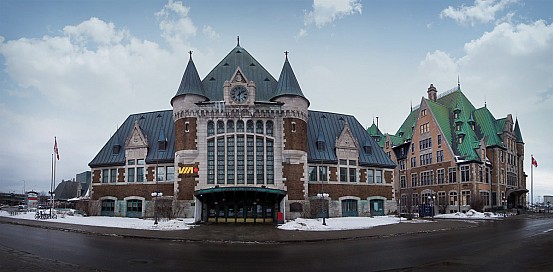
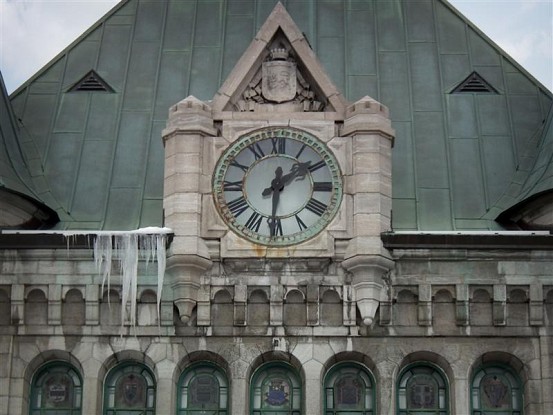
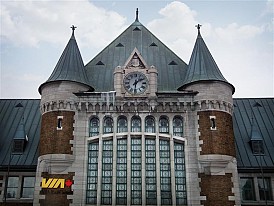
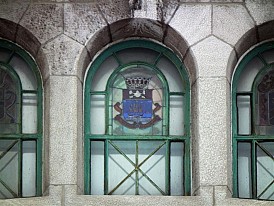
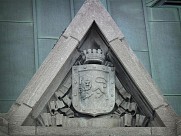
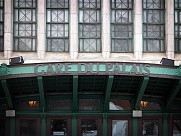
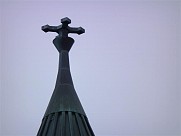
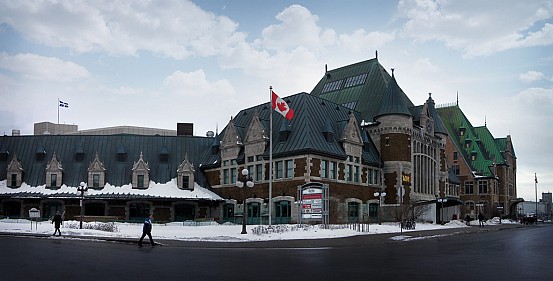
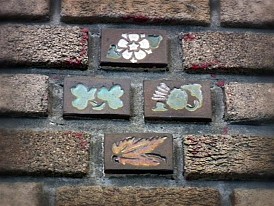
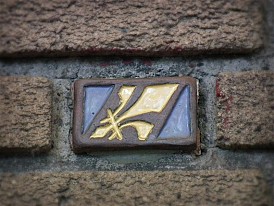
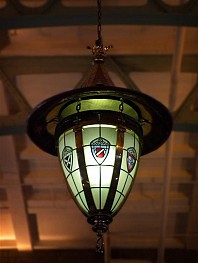
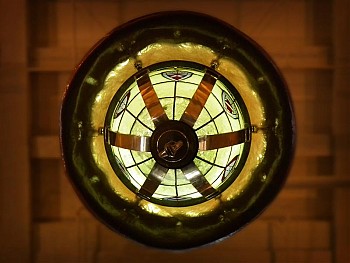
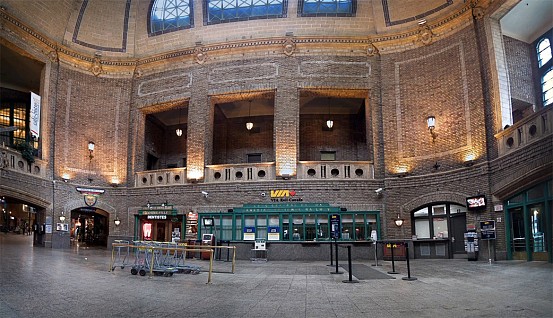
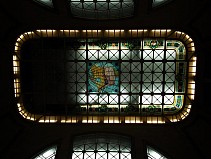
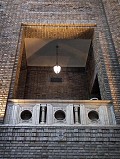
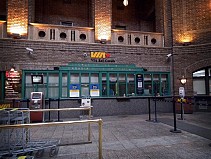
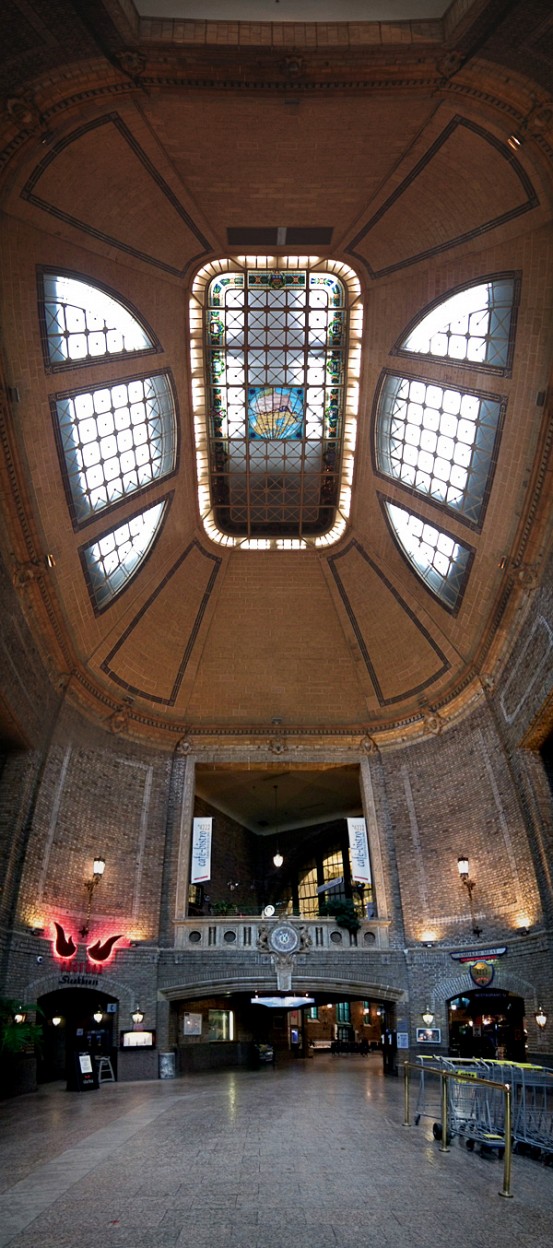
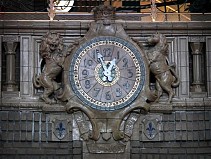
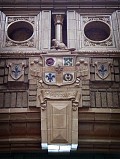
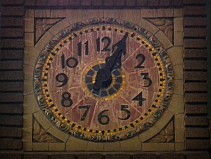
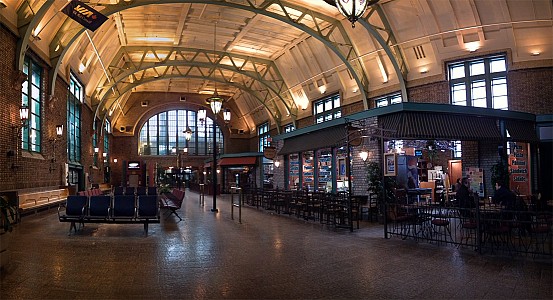



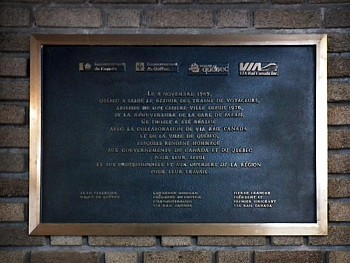
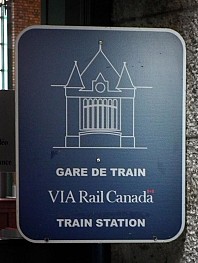
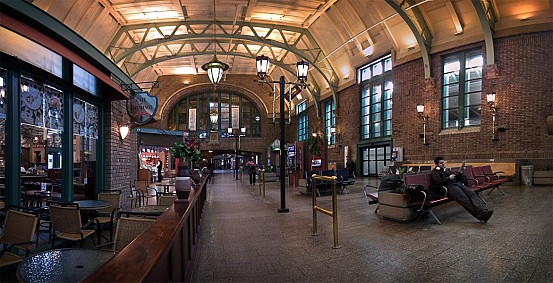
This is one example of a big mistake to abandon a centrally located station for suburban tiny stations in the middle of nowhere. Fortunately the mistake was corrected and trains returned to the building. Great pictures of the inside, I have never been able to find a lot of them with details.